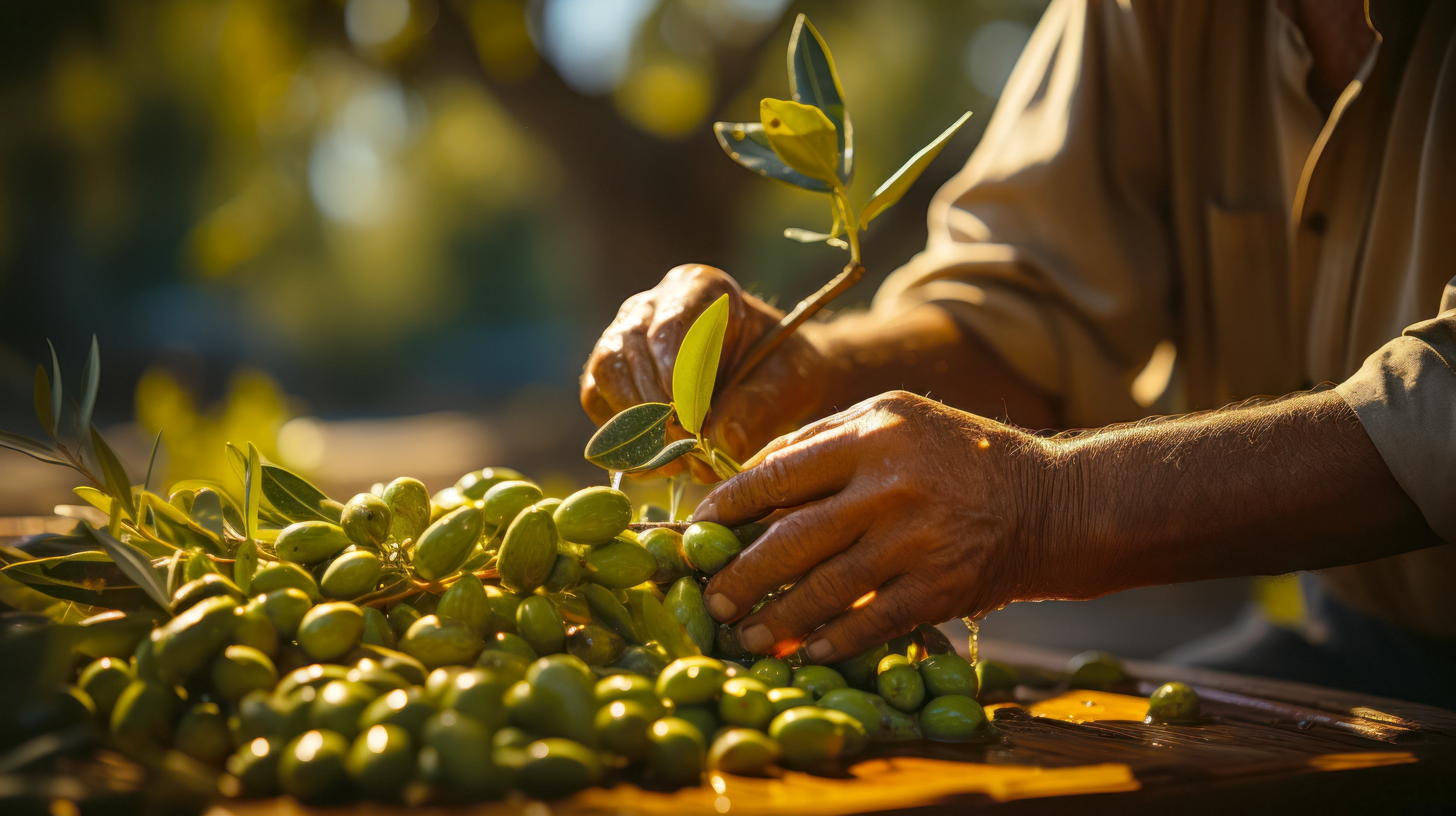
Exploring the Chetoui Olive: A Bold Variety with Exceptional Potential
Discover the unique characteristics of the Chetoui olive, a bold, high-polyphenol variety native to northern Tunisia. This article explores how different olive cultivars influence flavor, health benefits, and oil quality—with a special focus on Chetoui's antioxidant richness, historical roots, and role in producing some of the most potent extra virgin olive oils in the world.
When it comes to extra virgin olive oil, the variety of olive used has a profound effect on everything from taste to nutritional value. With over 1,000 known cultivars around the world, each olive variety carries its own history, chemistry, and regional signature.
Among these, the Chetoui olive, native to northern Tunisia, stands out for its high polyphenol content, bold flavor profile, and increasing global recognition among producers and researchers.
In this article, we explore the Chetoui olive’s characteristics, its place in Tunisia’s olive-growing history, and how it compares to other well-known olive varieties.
Understanding Olive Varieties
Olive trees are among the oldest cultivated crops in the world, with a domesticated history that spans more than 6,000 years. The species Olea europaea has diversified over millennia into hundreds of cultivars, each adapted to local climates, soils, and traditions.
Different olive varieties produce oils that vary in:
-
Flavor: From mild and buttery (like Arbequina) to sharp and peppery (like Koroneiki or Chetoui)
-
Color: Golden yellow to deep green
-
Polyphenol Content: Some cultivars naturally produce higher concentrations of antioxidants
-
Oil Yield: Varies based on olive size, water content, and harvest timing
-
Stability: Some oils have longer shelf lives due to higher levels of oleic acid and natural preservatives
Understanding the genetic and environmental diversity of olive cultivars helps consumers appreciate the complexity behind the oils they use daily—and encourages more informed choices.
The Chetoui Olive: Origins and Characteristics
The Chetoui cultivar is indigenous to northern Tunisia, particularly in the regions of Béja, Bizerte, and the mountainous Zaghouan area. Unlike the more widely planted Chemlali variety in central and southern Tunisia, Chetoui thrives in the rocky, higher-altitude terrain of the north, where cooler temperatures and limited rainfall encourage slower growth and higher nutrient concentration.
Key traits of the Chetoui olive:
-
Size and Shape: Small to medium-sized, firm fruit with a high flesh-to-pit ratio
-
Harvest Time: Typically harvested earlier in the season (October–November) for optimal oil quality
-
Oil Characteristics:
-
High polyphenol content—often above 600–800 mg/kg when early-harvested
-
Strong bitterness and pungency, with notes of green almond, arugula, or artichoke
-
Very stable due to low acidity and high antioxidant levels
-
Because of its robust chemical profile, Chetoui olive oil is especially valued for both health benefits and culinary intensity.
Comparing Chetoui to Other Olive Cultivars
While Chetoui is still lesser-known internationally, it compares favorably to more familiar high-phenolic varieties like:
| Cultivar | Origin | Flavor | Polyphenol Potential |
|---|---|---|---|
| Chetoui | Tunisia | Bold, peppery, bitter | Very high (600–900+ mg/kg) |
| Koroneiki | Greece | Grassy, spicy, green banana | High (300–700+ mg/kg) |
| Picual | Spain | Tomato leaf, bitter almond | Moderate to high |
| Arbequina | Spain/Catalonia | Mild, buttery, nutty | Lower (150–300 mg/kg) |
| Chemlali | Tunisia | Fruity, light, sweet finish | Lower to moderate |
Each of these cultivars has its place in the olive oil world, and preferences depend on use case: high-phenolic oils like Chetoui are favored for raw finishing and health applications, while milder oils like Arbequina are more approachable for new consumers.
Health Implications of High-Phenolic Cultivars
High-polyphenol olive oils have gained attention in recent years due to growing scientific research supporting their health benefits. Compounds like oleocanthal, hydroxytyrosol, and oleuropein—all abundant in Chetoui oil—have been studied for their:
-
Antioxidant effects, which protect cells from oxidative stress
-
Anti-inflammatory properties, including COX-inhibition similar to ibuprofen
-
Neuroprotective and cardioprotective actions, especially in the context of the Mediterranean diet
While all extra virgin olive oils provide some health benefits, oils from high-phenolic cultivars like Chetoui stand out for their potency and therapeutic potential—especially when consumed regularly as part of a balanced diet.
A Cultivar Worth Knowing
The Chetoui olive may not yet be a household name globally, but among producers, researchers, and discerning consumers, its reputation is growing. With its robust flavor, remarkable stability, and consistently high polyphenol levels, Chetoui stands at the intersection of tradition, terroir, and nutritional science.
At Selma, we proudly work with early-harvest Chetoui olives from northern Tunisia to produce a single-origin, cold-extracted extra virgin olive oil that reflects the purity and power of its source. Our goal is simple: to bring one of the world’s most exceptional olive cultivars to a broader audience, with transparency, integrity, and taste that speaks for itself.
References
-
European Food Safety Authority (EFSA). (2011). Scientific Opinion on the substantiation of health claims related to polyphenols in olive and protection of LDL particles from oxidative damage. EFSA Journal, 9(4), 2033. https://efsa.onlinelibrary.wiley.com/doi/epdf/10.2903/j.efsa.2011.2033
-
Beauchamp, G. K. et al. (2005). Phytochemistry: Ibuprofen-like activity in extra-virgin olive oil. Nature, 437(7055), 45–46. https://doi.org/10.1038/437045a
-
Moussa, F. B. et al. (2017). Chemical composition and biological activities of Chetoui and Chemlali olive oils from Tunisia. Journal of Food Measurement and Characterization, 11, 1838–1846. https://doi.org/10.1007/s11694-017-9585-6
-
IOC – International Olive Council. (2021). World Olive Oil Figures. https://www.internationaloliveoil.org/what-we-do/economic-affairs-promotion-unit/#figures
-
Servili, M., & Montedoro, G. (2002). Contribution of phenolic compounds to virgin olive oil quality. European Journal of Lipid Science and Technology, 104(9–10), 602–613. https://doi.org/10.1002/1438-9312(200210)104:9/10<602::AID-EJLT602>3.0.CO;2-P
-
Ben Temime, S. et al. (2006). Changes in olive oil quality of Chetoui variety according to the harvesting period and irrigation. Food Chemistry, 103(2), 509–518. https://doi.org/10.1016/j.foodchem.2006.08.013